Thingiverse
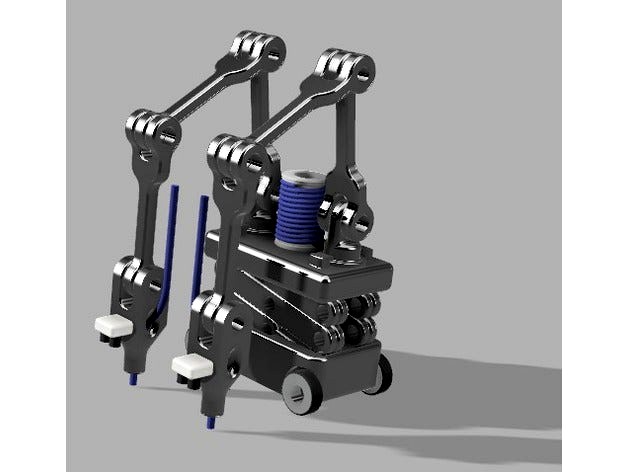
Building Print Bots - Printed Building Concept by MCmaks
by Thingiverse
Last crawled date: 3 years ago
This is just concept modeling, not a "useful" thing.
Printed building concept:
By printing plastic on a large scale, buildings can be constructed with less labor, especially areas that typically require special trades. Specifically, electrical conduits, electrical boxes/gangs, plumbing/piping, and paint-free interior and exterior surfaces could be printed. Other features, including gutters, insulation cavities, stairs/railings, counters, sinks, and door/window (rough) framing could potentially be printed as well. (The labor of painters, plumbers, electricians, etc is significantly reduced). Also, the printed plastic serves as a print-in-place form that can be filled with concrete for strength. Finally, this should enable architectural designs that aren't currently practical/feasible. All the things below are related to this greater printed building concept (concrete bones and plastic skin, veins, nerves, etc).
Printed Building Concept -- Wall Section Models (Not this thing)
https://www.thingiverse.com/thing:2827034
Two STL files (conventional and new style), roughly full scale, not yet printed.
Models the primary features/advantages of the printed building concept.
Plastic as a print-in-place concrete form (concrete skeleton, plastic skin)
Printed (plastic) piping (no in-wall plumping labor)
Printed (plastic) electrical conduit, boxes, and fixtures
Labor-free finished interior and exterior surfaces (no siding, no painting)
Labor-free, printed gutter
Design flexibility
Conventional style (round pipes, schedule xx, compatible with current pipe/conduit/boxes)
New style, print friendly (rectangular pipe/conduit)
Building Printer Concept Model - Parallel Print Bots (THIS THING)
https://www.thingiverse.com/thing:2852345
A single hot end would most likely be painfully slow, so this approach uses distributed print bots to parallel the printing effort (12 bots animated, 24 hot ends). The bots are essentially scissor lifts with two arms to guide hot ends. (Rough ideas; plastic? maybe PVC. filament or pellets? maybe filament. local accuracy/precision? maybe stereo cameras, machine vision, printed guide marks at lower layers).
Modeled at roughly 1/80 scale. Ver B of STLs have small improvements, but haven't been printed. Part with "top" in the name (upper body) should probably be printed upside down (as oriented in ver B). Also, I only printed one set of arm assy parts and one set of scissor assy parts because they're the same assy twice each. I printed full scale, which then requires M2 x 4mm and M2 x 6mm machine screws. I filed/trimmed as needed and ran a 2mm drill through the thru holes. smaller holes are sized for M2 machine screw to be essentially self-tapping. Probably much easier to build printed 1.5X and assembled with M3 x 6mm and M3 x 9/10mm screws.
https://youtu.be/qp7WvMQVddI
Other Building Printer Concept Models (NOT this thing)
https://www.thingiverse.com/thing:2828296
There's two competing requirements: First, printing plastic in a large volume and second, with enough "resolution" to enable fine features like plumbing and conduit. The things here model two "sketches" -- rough ideas -- for how to accomplish that. Both models use a very large delta (to achieve large volume, easy set-up) combined with a small Cartesian (to achieve fine resolution and high nozzle movement speed). This is very preliminary, just a rough idea, no real details (filament or pellets? probably pellets. Hopper or feed tube? Probably hopper. Material ... maybe PVC? Approach for supports? Lots of options, no clear winner. Time? Probably way too long ,,, maybe better as large nozzle, no details and/or concrete printer).
Printed Building Concept Model (Not this thing)
https://www.thingiverse.com/thing:2828645
Just a house in vertical sections to facilitate a rough simulation.
Thanks to Hans De Ridder and Joerg Schmit for the lowliner model, here: https://grabcad.com/library/mercedes-lowliner-1
Thanks to Saied Kabiri for the concrete mixer model, here: https://grabcad.com/library/concrete-mixer-machine-1
Printed building concept:
By printing plastic on a large scale, buildings can be constructed with less labor, especially areas that typically require special trades. Specifically, electrical conduits, electrical boxes/gangs, plumbing/piping, and paint-free interior and exterior surfaces could be printed. Other features, including gutters, insulation cavities, stairs/railings, counters, sinks, and door/window (rough) framing could potentially be printed as well. (The labor of painters, plumbers, electricians, etc is significantly reduced). Also, the printed plastic serves as a print-in-place form that can be filled with concrete for strength. Finally, this should enable architectural designs that aren't currently practical/feasible. All the things below are related to this greater printed building concept (concrete bones and plastic skin, veins, nerves, etc).
Printed Building Concept -- Wall Section Models (Not this thing)
https://www.thingiverse.com/thing:2827034
Two STL files (conventional and new style), roughly full scale, not yet printed.
Models the primary features/advantages of the printed building concept.
Plastic as a print-in-place concrete form (concrete skeleton, plastic skin)
Printed (plastic) piping (no in-wall plumping labor)
Printed (plastic) electrical conduit, boxes, and fixtures
Labor-free finished interior and exterior surfaces (no siding, no painting)
Labor-free, printed gutter
Design flexibility
Conventional style (round pipes, schedule xx, compatible with current pipe/conduit/boxes)
New style, print friendly (rectangular pipe/conduit)
Building Printer Concept Model - Parallel Print Bots (THIS THING)
https://www.thingiverse.com/thing:2852345
A single hot end would most likely be painfully slow, so this approach uses distributed print bots to parallel the printing effort (12 bots animated, 24 hot ends). The bots are essentially scissor lifts with two arms to guide hot ends. (Rough ideas; plastic? maybe PVC. filament or pellets? maybe filament. local accuracy/precision? maybe stereo cameras, machine vision, printed guide marks at lower layers).
Modeled at roughly 1/80 scale. Ver B of STLs have small improvements, but haven't been printed. Part with "top" in the name (upper body) should probably be printed upside down (as oriented in ver B). Also, I only printed one set of arm assy parts and one set of scissor assy parts because they're the same assy twice each. I printed full scale, which then requires M2 x 4mm and M2 x 6mm machine screws. I filed/trimmed as needed and ran a 2mm drill through the thru holes. smaller holes are sized for M2 machine screw to be essentially self-tapping. Probably much easier to build printed 1.5X and assembled with M3 x 6mm and M3 x 9/10mm screws.
https://youtu.be/qp7WvMQVddI
Other Building Printer Concept Models (NOT this thing)
https://www.thingiverse.com/thing:2828296
There's two competing requirements: First, printing plastic in a large volume and second, with enough "resolution" to enable fine features like plumbing and conduit. The things here model two "sketches" -- rough ideas -- for how to accomplish that. Both models use a very large delta (to achieve large volume, easy set-up) combined with a small Cartesian (to achieve fine resolution and high nozzle movement speed). This is very preliminary, just a rough idea, no real details (filament or pellets? probably pellets. Hopper or feed tube? Probably hopper. Material ... maybe PVC? Approach for supports? Lots of options, no clear winner. Time? Probably way too long ,,, maybe better as large nozzle, no details and/or concrete printer).
Printed Building Concept Model (Not this thing)
https://www.thingiverse.com/thing:2828645
Just a house in vertical sections to facilitate a rough simulation.
Thanks to Hans De Ridder and Joerg Schmit for the lowliner model, here: https://grabcad.com/library/mercedes-lowliner-1
Thanks to Saied Kabiri for the concrete mixer model, here: https://grabcad.com/library/concrete-mixer-machine-1
Similar models
thingiverse
free

Printed Building Concept - Home Model by MCmaks
...100mm. hasn't been printed/tested. maybe useful for dollhouse or similar printed building concept -- wall section models (not this...
thingiverse
free

Building Printer Concept Model by MCmaks
...rcedes-lowliner-1
thanks to saied kabiri for the concrete mixer model, here: https://grabcad.com/library/concrete-mixer-machine-1
thingiverse
free

Printed Building Concept - Wall Section Models by MCmaks
...el (not this thing)
https://www.thingiverse.com/thing:2828645
just a house in vertical sections to facilitate a rough simulation.
thingiverse
free

Conduit Mounting Bracket by triton_9
...ild a crane/claw machine out of nema17s and conduit pipe.
more pieces can be found here:https://www.thingiverse.com/thing:2859618
thingiverse
free

Replacing for "IKEA Samla - Filament enclosure with passages" by EugK
...w.thingiverse.com/thing:1461750
for 32.3mm plastic pipe.
added pipe stand in new design: http://www.thingiverse.com/thing:1799292
thingiverse
free

Conduit Crane Machine NEMA17 Axis Mount by triton_9
...58174
and conduit mounting brackets from this:https://www.thingiverse.com/thing:2862307
will post rest of machine as it is built.
grabcad
free

HOT AIR DRYER "LUXOR HD 600"
...hot air dryer "luxor hd 600"
grabcad
hot air dryer for plastic pellets
thingiverse
free

Cable chain anchor mounts for D-bot by Rexipus
... exact settings will be up to the individual and their printer to decide, but my recommendation is to make them stiff and strong.
thingiverse
free
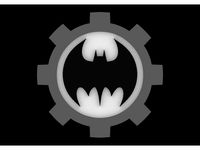
Dark Nights: Metal - The Murder Machine Emblem by FinePrint3D
...thing:2812599
the dawnbreaker: https://www.thingiverse.com/thing:2805610
the merciless: https://www.thingiverse.com/thing:2813230
thingiverse
free

3/4" EMT Conduit end plug for MPCNC by KB1FCH
...giverse.com/thing:1885144 sized to fit standard us 3/4" emt conduit. made to protect wires running through conduit on mpcnc.
Mcmaks
thingiverse
free

Laptop lady by MCmaks
... pillar supports in slic3r ... be careful with the sun when removing the supports. silhouette filled with white correcting fluid.
thingiverse
free

Remix RepRap Discount case -- For 2020 Mount FLSun i3 by MCmaks
...remix reprap discount case -- for 2020 mount flsun i3 by mcmaks
thingiverse
mounting holes for 2020 plus lcd wire guides.
thingiverse
free

Weighted number blocks -- Slide version by MCmaks
...in/out. nickels (us) can be used to weight blocks proportionally. compatible with scale:https://www.thingiverse.com/thing:2517509
thingiverse
free

Triangle Properties Learning Aid -- Big version by MCmaks
...mm side lengths.
** i haven't printed this yet -- work in progress.
small version: https://www.thingiverse.com/thing:2519895
thingiverse
free

Closet organizer clips by MCmaks
...ve versions may be easier to print (no support issues), but may need to be painted to have adequate contrast inside dark closets.
thingiverse
free

Whiteboard compass by MCmaks
...arent-hanger-kitchen-bathroom-suction-cup-sucker-20mm/311566424293?sspagename=strk%3amebidx%3ait&_trksid=p2060353.m2749.l2649
thingiverse
free

Whiteboard game spinner by MCmaks
...arent-hanger-kitchen-bathroom-suction-cup-sucker-20mm/311566424293?sspagename=strk%3amebidx%3ait&_trksid=p2060353.m2749.l2649
thingiverse
free

2020 RA Spool Holder with Filtered Filament Guide by MCmaks
...ll piece of foam (10mm x 10mm x 5mm uncompressed) with a hole punched in the middle. filament guide has supports in the stl file.
thingiverse
free

Triangle Properties Learning Aid by MCmaks
...version in the works: https://www.thingiverse.com/thing:2520435
i used no supports or bed adhesion, 0.2mm layer height, i3 clone.
thingiverse
free

Stackable file paper holder organizer - pencil struts by MCmaks
...(1.375" x 1.875"); cut card stock or use small self-stick note. scrap cardboard for the platforms; i used a cereal box.
Bots
turbosquid
$19

Bot
... available on turbo squid, the world's leading provider of digital 3d models for visualization, films, television, and games.
turbosquid
free
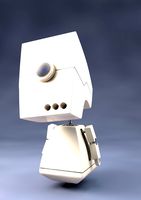
Bot
... available on turbo squid, the world's leading provider of digital 3d models for visualization, films, television, and games.
3d_export
$10
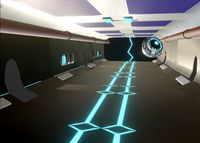
scanner bot
...scanner bot
3dexport
cool scanner bot who scans for fixing things...
3d_ocean
$9

Apc Bot
...n bot games toys
an all-purpose-constructo-bot. for cartoon purposes. the model is not rigged. please use vray adv for rendering.
3d_export
$75

Bot 3D Model
...bot 3d model
3dexport
robot bot man kiborg character
bot 3d model evgen 19504 3dexport
turbosquid
free

Eye Bot
...eye bot
turbosquid
free 3d model eye bot for download as fbx on turbosquid: 3d models for games, architecture, videos. (1514059)
turbosquid
$29

Gorill-bot
...bosquid
royalty free 3d model gorill-bot for download as fbx on turbosquid: 3d models for games, architecture, videos. (1239456)
turbosquid
$25
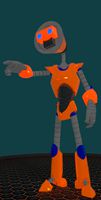
Lamp Bot
...bosquid
royalty free 3d model lamp bot for download as blend on turbosquid: 3d models for games, architecture, videos. (1230121)
turbosquid
$10
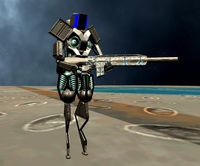
Spectre Bot
...osquid
royalty free 3d model spectre bot for download as fbx on turbosquid: 3d models for games, architecture, videos. (1616378)
turbosquid
$8
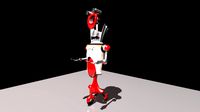
Ultra Bot
...urbosquid
royalty free 3d model ultra bot for download as ma on turbosquid: 3d models for games, architecture, videos. (1330752)
Concept
3d_export
$5
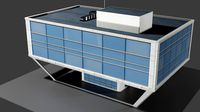
concept house
...concept house
3dexport
concept house blend.
turbosquid
$20
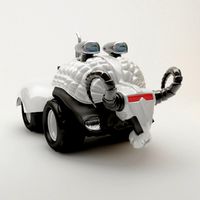
concept
... available on turbo squid, the world's leading provider of digital 3d models for visualization, films, television, and games.
turbosquid
free

concept
... available on turbo squid, the world's leading provider of digital 3d models for visualization, films, television, and games.
turbosquid
free

Concept
... available on turbo squid, the world's leading provider of digital 3d models for visualization, films, television, and games.
turbosquid
free

Concept
... available on turbo squid, the world's leading provider of digital 3d models for visualization, films, television, and games.
3ddd
$1

Bo concept
...bo concept
3ddd
boconcept , декоративный набор
bo concept
3d_ocean
$45

Dreamcar concept
...cept cars from the past.before i became 3d modeler i sketched a lot futuristic cars.when i want it to look more realistic,i st...
3d_ocean
$49

Buggy Concept
... poly massive outdoor robust vehicle
just a model of are own buggy concept vehicle. maybe you can make a beautiful renders of it!
3d_export
free

concept s ii
...concept s ii
3dexport
concept car
3d_export
free

concept s iii
...concept s iii
3dexport
concept car
Building
archibase_planet
free

Building
...building high-rise building office building construction
building n050115 - 3d model (*.gsm+*.3ds) for exterior 3d visualization.
3d_export
$5
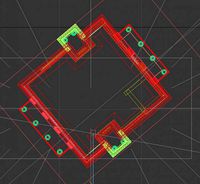
building
...building
3dexport
clasic building
3ddd
$1
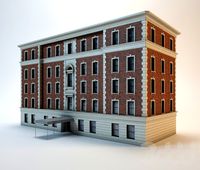
building
...building
3ddd
здание
building
archibase_planet
free

Building
...lanet
building office office building construction
building n090914 - 3d model (*.gsm+*.3ds+*.max) for exterior 3d visualization.
archibase_planet
free
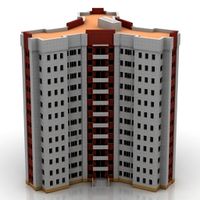
Building
...net
building tower construction high-rise building
building n100214 - 3d model (*.gsm+*.3ds+*.max) for exterior 3d visualization.
3d_export
free

Building
...building
3dexport
low poly building;
3d_export
free
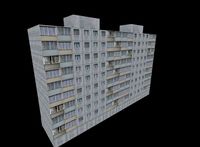
Building
...building
3dexport
low poly building;
3d_export
free

Building
...building
3dexport
low poly building;
3d_export
free

Building
...building
3dexport
low poly building;
3d_export
free

Building
...building
3dexport
low poly building;
Printed
design_connected
$27
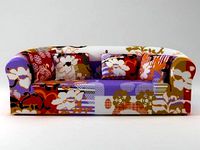
...print
designconnected
moroso print computer generated 3d model. designed by wanders, marcel.
3ddd
free

Eichholtz Prints
...- eichholtz print central station i
13 - eichholtz print central station ii
14 - eichholtz print marisa
15 - eichholtz print tish
3ddd
$1

Eichholtz Prints
...print abstract - set of 2
10 - eichholtz print orange abstract
11 - eichholtz print buddha right
12 - eichholtz print buddha left
turbosquid
$1

... available on turbo squid, the world's leading provider of digital 3d models for visualization, films, television, and games.
3ddd
free
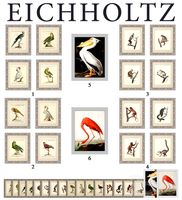
Eichholtz Prints
...of 4
2 - print dunbar 2 set of 4
3 - print guadeloupe 1 set of 4
4 - print guadeloupe 2 set of 4
5 - print giles
6 - print trett
3ddd
$1

Eichholtz Prints
...nt tutti frutti
3 - eichholtz prints watson - set of 2
4 - eichholtz prints antique nautilus - set of 2
5 - eichholtz print tiara
3d_export
$5
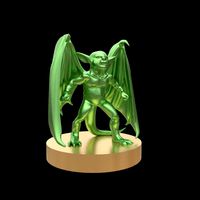
Monster for printing
...monster for printing
3dexport
monster 3d model printing
3ddd
free
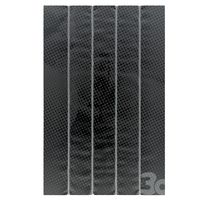
printed rug
...printed rug
3ddd
ковер
very creative printed rug
3ddd
free
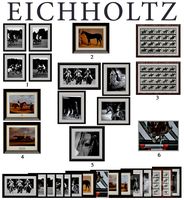
Eichholtz Prints
...иал: бумага
габариты (вхш): 72 x 62 см
описание: print sweetmeat - постер в деревянной раме.
3 - prints varsity set of 2
арти
3ddd
free

Art Print Posters
...art print posters
3ddd
прованс
art print posters by patrician prints
design_connected
$27

...print
designconnected
moroso print computer generated 3d model. designed by wanders, marcel.
3ddd
free

Eichholtz Prints
...- eichholtz print central station i
13 - eichholtz print central station ii
14 - eichholtz print marisa
15 - eichholtz print tish
3ddd
$1

Eichholtz Prints
...print abstract - set of 2
10 - eichholtz print orange abstract
11 - eichholtz print buddha right
12 - eichholtz print buddha left
turbosquid
$1

... available on turbo squid, the world's leading provider of digital 3d models for visualization, films, television, and games.
3ddd
free

Eichholtz Prints
...of 4
2 - print dunbar 2 set of 4
3 - print guadeloupe 1 set of 4
4 - print guadeloupe 2 set of 4
5 - print giles
6 - print trett
3ddd
$1

Eichholtz Prints
...nt tutti frutti
3 - eichholtz prints watson - set of 2
4 - eichholtz prints antique nautilus - set of 2
5 - eichholtz print tiara
3d_export
$5

Monster for printing
...monster for printing
3dexport
monster 3d model printing
3ddd
free

printed rug
...printed rug
3ddd
ковер
very creative printed rug
3ddd
free

Eichholtz Prints
...иал: бумага
габариты (вхш): 72 x 62 см
описание: print sweetmeat - постер в деревянной раме.
3 - prints varsity set of 2
арти
3ddd
free

Art Print Posters
...art print posters
3ddd
прованс
art print posters by patrician prints
